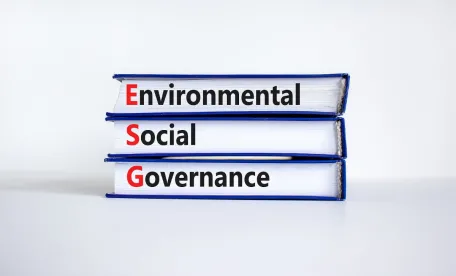A phrase first coined in 2005, environmental, social, and corporate governance (“ESG”) is making headlines. ESG is a lens applied by investors to evaluate the extent to which corporations function with respect to a variety of pro-social goals. The term “ESG” is often used interchangeably with terms like “sustainable investing” or “socially responsible investing.” Both institutional and individual investors have been vocal about the importance of these principles in investment decisions, as well as their interest in increased transparency over a variety of non-financial metrics.
Recently, the Securities and Exchange Commission (SEC) has indicated its intent to flex its rulemaking muscle to standardize ESG metrics that, under past administrations, had been voluntary. These proposed rule changes could drastically increase the level of required transparency for management and board rooms of publicly traded companies.
While past administrations have taken a hands-off approach towards regulating ESG disclosure, the current SEC has announced an intent to incorporate ESG metrics into a regulatory framework for all publicly traded companies to standardize what otherwise have been varied data reporting.
On March 21, 2022, the SEC proposed rules regarding the “E” category of ESG that may inform what employers can expect to be instituted on the other categories. The proposed rule changes would require corporations registered with the SEC to disclose information about greenhouse gas emissions, as well as the corporation’s identification of exogenous climate related risks (such as severe weather and rising temperatures), their risk management strategies, and the predicted impact such climate events could have on their bottom line.[1]
With this increased structure put in place for climate-related disclosure, publicly traded companies are wondering if more detailed disclosures on their social and governance metrics are next. Publicly traded companies are already required to provide information regarding “human capital” on their form 10-K reports, without a standardized disclosure requirement. The SEC directed corporations to describe their human capital resources in their 10-Ks “to the extent material to the understanding of that registrant’s business taken as a whole,” including any measures “that address the development, attraction and retention of personnel.” A survey from Financial Executives International surveyed the 10-K reports of 150 companies from the S&P 500, and determined that these human capital disclosures ranged from a single paragraph to three full pages, and that there was little uniformity in what information was included.[2] While some corporations chose to include information like metrics regarding gender pay equity and diversity, equity, and inclusion initiatives, others focused on metrics like COVID-19 relief, remote work availability, and employee benefits. Without standardized requirements, corporations could include as much or as little data as they want.
SEC leadership has suggested that the agency could eventually require information on employee compensation, benefits, safety, and even workforce demographics as part of human capital disclosures. With new rulemaking on the horizon, publicly traded companies will be keeping an eye on exactly what statistics they will be required to provide, and how their disclosures will impact the perception of shareholders.




 />i
/>i

